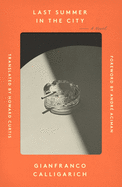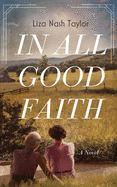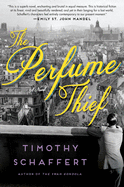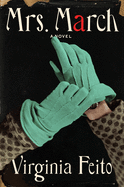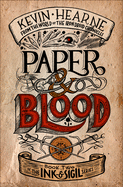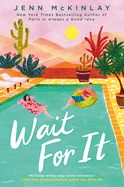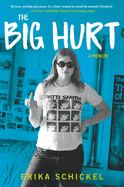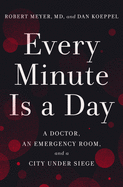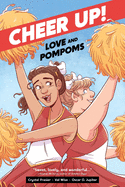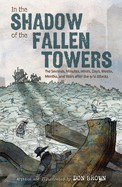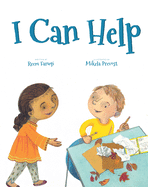 |
| (photo: Heidi Ross) |
Christine French Cully is the editor-in-chief of Highlights for Children. She is also the company's chief purpose officer, which entails growing awareness and implementation of Highlights' purpose, core beliefs and values. Cully spent 15 years in children's publishing before joining Highlights in 1994. Dear Highlights, a compilation of children's letters, editors' responses and commentary, was just published by Highlights Press.
What was the inspiration behind creating and compiling Dear Highlights?
This is a book we've long dreamed of publishing. We respond to every child who takes the time to send us a letter, e-mail, drawing, poem or story. Over our 75-year history, we've received more than two million pieces of correspondence from kids.
All this mail beautifully informs our work by deepening our understanding of childhood. Over the decades, kids have written to us as if we are a dear, trusted friend. When we encourage kids to share their thoughts and feelings, and when we listen with empathy, kids feel heard and seen. We hope this book will elevate kids' voices and remind grown-ups of the importance of leaning in to listen and learn.
How did you decide which letters/topics to include in the book?
Because the book is both a look at childhood today and a kind of time capsule looking back over 75 years, we looked for a sampling of letters from every decade of our history. We aimed for a selection of letters that represented the wide variety of subjects kids write about--universal concerns related to friends, family, and school, as well as serious concerns that are less frequently discussed but nevertheless very real in the lives of some children. We also selected letters that give us clues about how kids are thinking about the larger world--the societal changes that affect them and significant historical events. And, of course, we wanted to represent the letters of both boys and girls.
What have you learned from all these years of reading and responding to children's letters?
Our main conclusion is that most young children yearn for more moments when the grown-ups they love are fully present and listening with empathy and curiosity. They crave connection.
We've also learned that no matter how loving and attentive their family is, a child can find it difficult to confide in a parent. Sometimes kids withhold because they don't wish to hurt the parent's feelings or give a parent cause to worry. Some kids simply feel safer writing down their thoughts and big feelings--or drawing a picture to convey those thoughts. We've come to appreciate how willingly and bravely kids will share their concerns if they feel safe. And that safety comes from warm, responsive, trusting relationships.
We hope this book reminds parents that we must behave intentionally to create that kind of safety. When we do, we say to kids, "You matter. And what you think and feel matters." When kids feel they matter, they grow in confidence and develop a sense of self and a feeling of belonging. And that puts them on the path to becoming people who will make a more empathetic and optimistic world for us all.
What has shifted over the years as children have written to Highlights? What has stayed the same?
Although the world has changed tremendously in the last 75 years, kids haven't really changed that much. They want to know how to get along with family members, friends and teachers. They ask for tips on doing well in school and breaking bad habits. They ask for advice on how to achieve their goals and how to think about current events. The details in their letters vary, of course. But the fundamental questions are very much the same. Kids still want to feel they belong. They still want to be the best version of themselves. And they still look for guidance and support from their grown-ups.
One chapter, however, contains letters about a subject we had never before seen addressed: the chapter on Covid-19. When physical schools closed abruptly and kids found themselves staying at home--doing school on Zoom at the kitchen table alongside parents who were now working remotely--we heard from kids. They wrote to us about the challenges of digital learning, about missing friends and extended family, about canceled birthday parties and about their fear that they or someone they love might get sick. For the first time in our history, we were confronting many of the same emotions as our readers, in the same moment of time. We were able to empathize in a way we never could before.
Do you have any favorite or particularly memorable letters?
This is a hard question because many letters linger in my mind and heart. One of these letters was from a tween who described the "code" she was trying to live by with a bulleted list of behaviors. They mostly involved how she was engaging (or more aptly, not engaging) with her mother, crying herself to sleep at night, trying not to "burden" her mom with all her sad thoughts.
Was she describing typical behavior seen in kids on the cusp of puberty, or was this something more serious? We rarely have enough context in a letter to know for sure. But we were grateful we could write her back, validate her feelings and assure her that her mother or another grown-up she trusts would absolutely want to know how she feels. Sometimes kids are really asking us the most fundamental question: Am I loved? Does anyone really care about me? It's an honor and a privilege to be able to reassure them that they are, indeed, loved and cared about.
Of course, I have some favorite letters that are less weighty. I love the letter from the child who wrote to say that her school put on a play and they sang "Baby Beluga." Several months later, she said she still couldn't get the song out of her head and pleaded for us to help. I could relate to that problem!
We take every letter seriously, even the ones that make us chuckle a little. Any concern that troubles a child enough to motivate them to write to us deserves respect and attention.
What might readers learn from the letters and drawings in this book?
We adults often think we remember childhood clearly. But for most of us, our memories are spotty or blurred. Sometimes we can be a little dismissive of kids' concerns. After all, because we have hindsight, we know that most of the time, things work out fine.
But this collection paints a clearer picture of childhood--reminding us of the ups and downs of the growing-up years. It shows us kids' rich, complex inner lives--and can teach us not to underestimate their interest in understanding the world and finding their place in it.
The book also includes a selection of kids' drawings and original poems sent to us over the years. For some kids, self-expression with words is challenging. But their artwork can reveal a great deal about their inner thoughts. We look at kids' creative work carefully, and we often respond to a poem or drawing as if it were a letter asking for guidance. This was particularly true after 9/11, when we received many drawings and poems about the fall of the Twin Towers. Sharing their drawings and poems related to that horrific event was the best way for some kids to let us know they were working to process the trauma--and we reached out to offer support. --Katie Noah Gibson
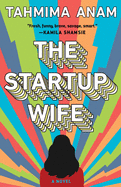 In Tahmima Anam's novel The Startup Wife (Scribner, $26), Asha, the designer of an algorithm to unlock the empathetic brain for AI, gets enmeshed in a tech startup with her husband, eventually "wondering how I've managed to set up a situation where I'm doing all the work and he's having all the fun. Never mind, I tell myself, I'm having fun too. I must have been a Spartan in my previous life, because nothing pleases me more than work."
In Tahmima Anam's novel The Startup Wife (Scribner, $26), Asha, the designer of an algorithm to unlock the empathetic brain for AI, gets enmeshed in a tech startup with her husband, eventually "wondering how I've managed to set up a situation where I'm doing all the work and he's having all the fun. Never mind, I tell myself, I'm having fun too. I must have been a Spartan in my previous life, because nothing pleases me more than work."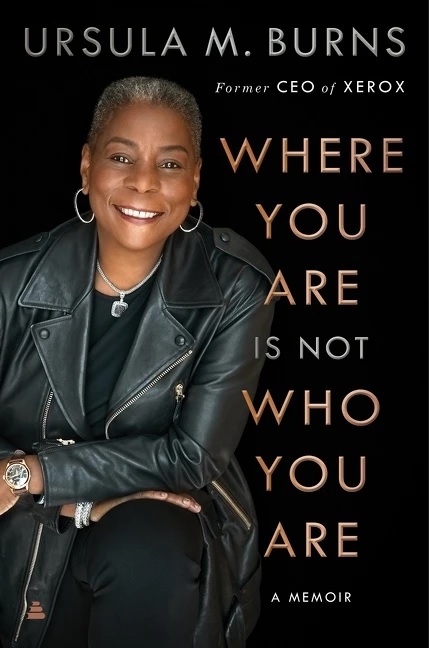 Where You Are Is Not Who You Are: A Memoir (Amistad, $27.99) is an incisive and inspiring book by former Xerox CEO Ursula Burns, who writes: "I worked extremely hard, and that was a big positive in my career.... Being wildly overprepared answered the question that people had but didn't ask when they first met me. How the hell did she get here?"
Where You Are Is Not Who You Are: A Memoir (Amistad, $27.99) is an incisive and inspiring book by former Xerox CEO Ursula Burns, who writes: "I worked extremely hard, and that was a big positive in my career.... Being wildly overprepared answered the question that people had but didn't ask when they first met me. How the hell did she get here?"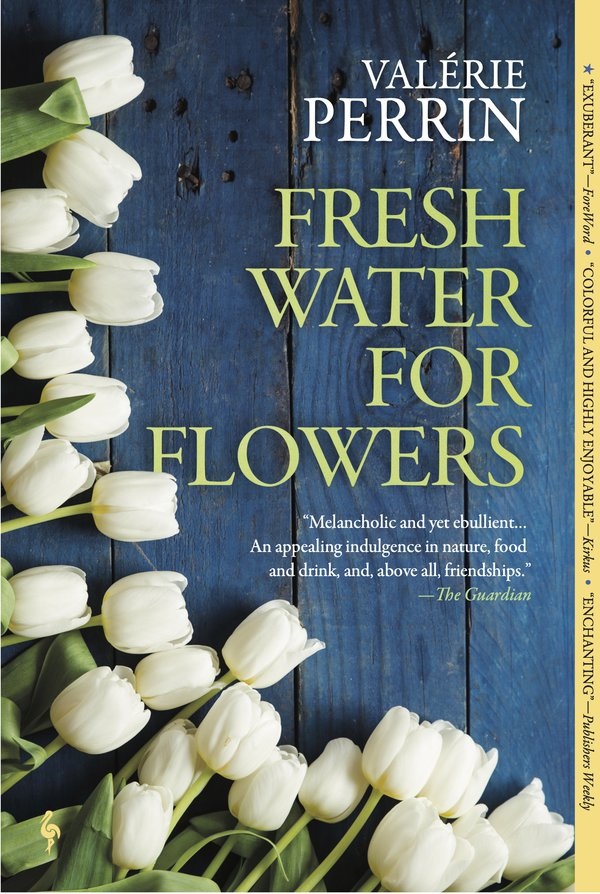 Violette Toussaint, the French cemetery caretaker--by every definition--in Valérie Perrin's novel Fresh Water for Flowers, translated by Hildegarde Serle (Europa Editions, $16.95), observes: "My job consists of being discreet, liking human contact, not feeling compassion. For a woman like me, not feeling compassion would be like being an astronaut, a surgeon, a volcanologist, or a geneticist. Not part of my planet, or my skill set. But I never cry in front of a visitor."
Violette Toussaint, the French cemetery caretaker--by every definition--in Valérie Perrin's novel Fresh Water for Flowers, translated by Hildegarde Serle (Europa Editions, $16.95), observes: "My job consists of being discreet, liking human contact, not feeling compassion. For a woman like me, not feeling compassion would be like being an astronaut, a surgeon, a volcanologist, or a geneticist. Not part of my planet, or my skill set. But I never cry in front of a visitor."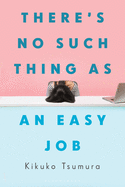 The narrator of Kikuko Tsumura's There's No Such Thing as an Easy Job, translated by Polly Barton (Bloomsbury, $18), is a young woman who wants a job near her house and, "ideally, something along the lines of sitting all day in a chair." Complications ensue, beginning when she's hired to spy on a writer: "I'd come to the conclusion that there were very few jobs in the world that ate up as much time and as little brainpower as watching over the life of a novelist who lived alone and worked from home." --Robert Gray, editor
The narrator of Kikuko Tsumura's There's No Such Thing as an Easy Job, translated by Polly Barton (Bloomsbury, $18), is a young woman who wants a job near her house and, "ideally, something along the lines of sitting all day in a chair." Complications ensue, beginning when she's hired to spy on a writer: "I'd come to the conclusion that there were very few jobs in the world that ate up as much time and as little brainpower as watching over the life of a novelist who lived alone and worked from home." --Robert Gray, editor


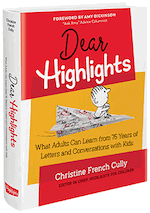


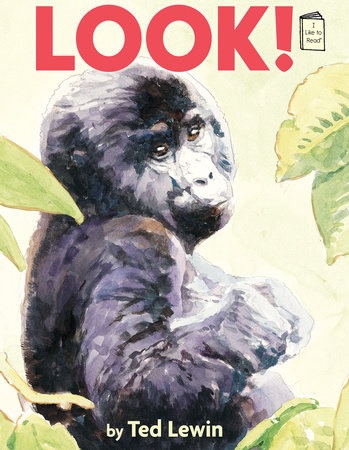 Ted Lewin, who illustrated and wrote more than 200 children's and YA books, died on July 28 at age 86. Among his many awards were a Caldecott Honor for Peppe the Lamplighter in 1994. In 2015, he was inducted into the Society of Illustrators Hall of Fame, and in 1998, he won the Society of Illustrators' Stevan Dohanos Award. He was raised in Buffalo, N.Y. in a house full of exotic animals, including an iguana, a rhesus monkey, a chimpanzee and a lion, all of which Lewin liked to sketch. His two older brothers, Donn and Mark, were professional wrestlers. Lewin financed his Pratt Institute education by working as a part-time wrestler, which he pursued for 26 years and documented in I Was a Teenaged Professional Wrestler.
Ted Lewin, who illustrated and wrote more than 200 children's and YA books, died on July 28 at age 86. Among his many awards were a Caldecott Honor for Peppe the Lamplighter in 1994. In 2015, he was inducted into the Society of Illustrators Hall of Fame, and in 1998, he won the Society of Illustrators' Stevan Dohanos Award. He was raised in Buffalo, N.Y. in a house full of exotic animals, including an iguana, a rhesus monkey, a chimpanzee and a lion, all of which Lewin liked to sketch. His two older brothers, Donn and Mark, were professional wrestlers. Lewin financed his Pratt Institute education by working as a part-time wrestler, which he pursued for 26 years and documented in I Was a Teenaged Professional Wrestler. 